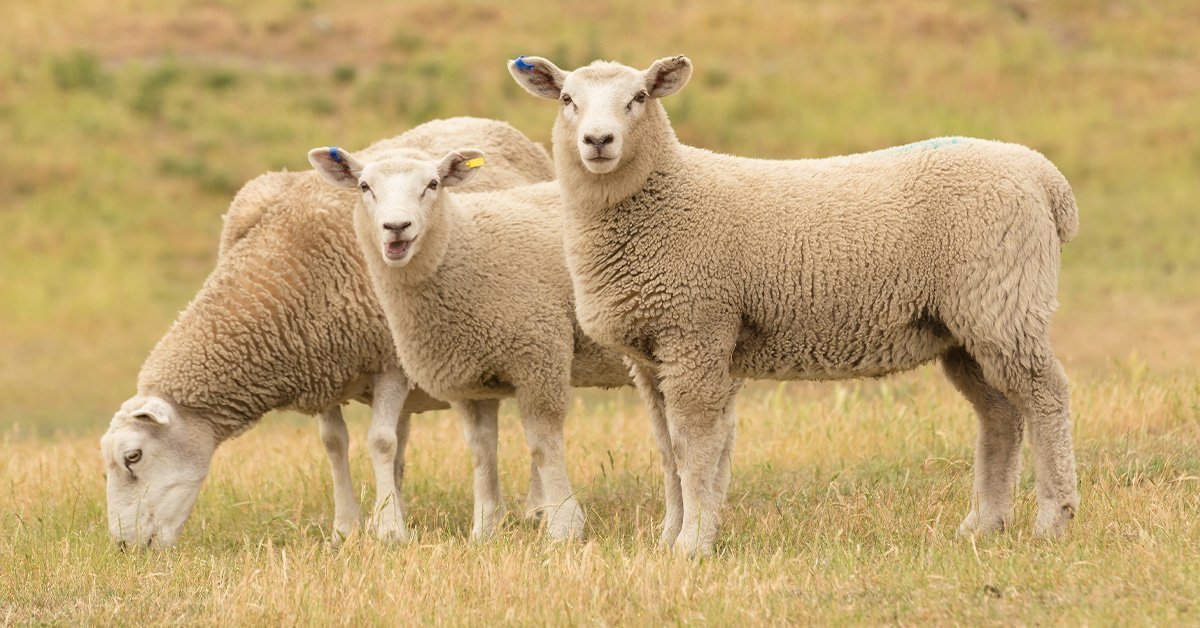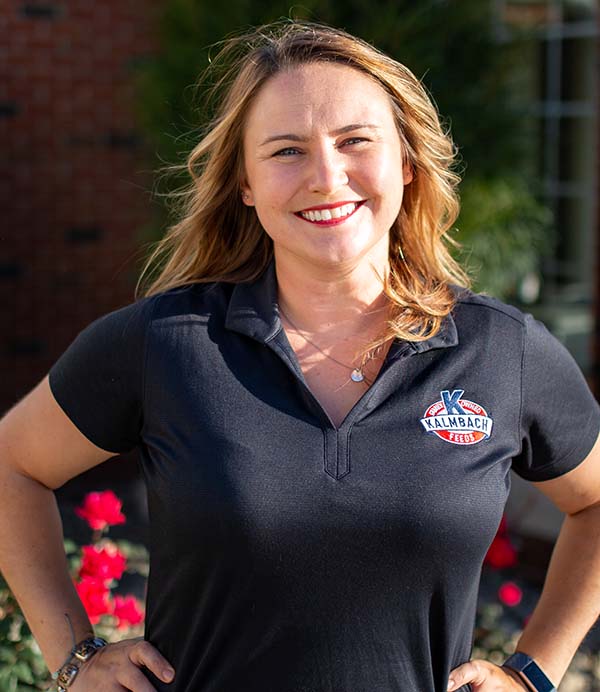Caring for Sheep

Sheep Characteristics
Sheep, like goats, are considered prey animals. They prefer to be in a herd to feel safe from predators. This instinct makes them skittish around people and other animals, resulting in sheep flocking close together. When comparing how to care for sheep versus goats, there are many similarities, but there are some slight differences. Sheep can be slightly bigger, and have thicker coats compared to goats. Sheep, depending on their breed, need to be sheared, unlike goats, who shed on their own.
Housing for Sheep
Sheep are hardy animals. However, shelter is highly recommended for protection during harsh weather. Sheep can be housed in barns, or a simple three-sided shed to get them out of bad weather. If you are rotational grazing, a good idea would be to use a movable structure that can be placed in different locations during each grazing cycle. When building your sheep’s housing option, you want to make sure that there is good ventilation. Having poor ventilation can cause the sheep to develop respiratory problems and can contribute to heat stress, which will affect the production of your flock.
The addition of a guard animal to the flock can be an ideal way to keep out predators, like coyotes. Some common types of guard animals include dogs, llamas, and donkeys. Llamas tend to be a good fit with sheep, as they consume a similar diet to sheep and can maintain safety in the flock. Llamas tend to bond well with sheep, and they have natural aversion towards Canidae species (coyote, fox, dog, etc.). Likewise, donkeys have similar characteristics to llamas, but they also might be easier and cheaper to acquire. Certain livestock guardian dog (LGD) breeds make good flock guardians as well. A breed that comes to mind is the Great Pyrenees, which are not predatory towards sheep, naturally docile, and bond well. A flock guardian, no matter the animal, can be a great addition to your farm in order to keep your flock safe, and therefore, less stressed.
Manure Management
When it comes to owning any livestock, the one question that always pops up is manure. Where do you put the manure, or how can you use it? Most manure is great fertilizer to put on fields. When making a manure management plan, items that need to be considered are 1) how to collect the manure, 2) how to store the manure, 3) how to dispose of the manure, and/or 4) how to use the manure to provide value to the farm. Having a storage place for manure on your farm is very important. It allows you to consolidate the manure into one space, keeping pens clean and reducing runoff. Manure is valuable and can be spread on fields, composted, or sold to garden and landscape enthusiasts. Some examples of manure storage are bunks, which are great options for smaller farms, and lagoons, which are good options for larger farms to invest in.
Sheep Diet and Nutrition
Sheep are natural herbivores. Sheep can get all their nutrient requirements by grazing pastures. When on pasture, sheep will graze up to 8 hours per day. Naturally, a sheep’s diet is derived mostly from foraging. Some farmers strictly pasture raise their sheep, along with supplementing good quality hay during the winter months. Depending on life stages and forage availability, sheep can also benefit from adding grain to their diet. At Kalmbach Feeds, we offer a wide range of sheep and lamb feed to add to your flock’s diet. Mineral is also a great option to supplement your flock’s health, and weatherized options are perfect for pasture applications where it might be exposed to the elements. When picking out mineral, make sure it is formulated for sheep, as goat and all-stock minerals have levels of additional copper that can be detrimental to sheep. Newborn lambs may also require a selenium injection if the state’s soil is deficient in selenium. At Kalmbach Feeds, we offer several feed options to serve your flock. As good practice, fresh clean water should be available to your flock at all times.
When it comes to feeding, most farmers opt for feed bunks for their sheep. Bunks offer enough space for all sheep to eat, and the farmer can put grain and hay in the bunk. After feeding, it is easy to check your bunks and see what was eaten and what wasn’t. For good feed bunk management, old feed should not be left out and feed bunks should be cleaned regularly.
Routine Sheep Care and Maintenance
- Shearing is an important part in maintenance of your sheep. Shearing is only necessary when you have wool sheep like Suffolk, for example. There are some breeds of sheep, like Katahdins, that are considered hair sheep, meaning that they will shed a coat of hair in the spring. The recommendation for most other breeds is to shear at least once a year, most of the time in the spring. Some farmers will shear up to twice a year, depending on what climate they live in.
- Hoof trimming is important for your flock and should be done every 6 to 10 weeks to prevent overgrowth. Trimming hooves also limits any foot or leg problems.
- Deworming is another part of maintenance and overall basic care. Deworming should take place at least every 1- 3 months and methods should be alternated to reduce resistance.
- Fecal testing in the spring and fall for coccidia and parasites will help you stay ahead of potential challenges.
- A vaccination schedule will help keep the flock healthy. There are certain vaccines that should be given to sheep throughout their reproductive and growing periods. Below, Table 1 is showing some vaccines that are recommended to give your flock. For good practice, one should consult their veterinarian first.
Table 1
|
Stages |
Vaccine |
|
Pregnant Ewe (2-4 weeks prior to lambing) |
· Clostridium Perfringens type C+D · Tetanus |
|
Lambs (30 days old) |
· Clostridium Perfringens type C+D
|
|
Ewes (30-60 days prior to breeding) |
· Campylobacter Fetus-Jejuni Bacterin · Chlamydia Psitlaci ewe vaccine · Clostridial 8-way (only once) · Caseous Lymphadenitis |
|
Rams (30-60 days prior to breeding) |
· Clostridial 8-way |
Record Keeping
Record keeping is an important aspect of any farm. Keeping record of basic maintenance and care like vaccination, shearing, hoof trimming, and breeding lets you, the farmer, track the dates on when everything was done and any special notes about the animal’s care. For example, keeping record of births and what ewes had twins or singles is important in deciding what stock to keep or sell off for adequate production on your farm.
Isolation of New Stock
When expanding your flock, you need to have a spot to place new animals. Having space to isolate new sheep is a must. New flock members should never be placed in the flock as soon as getting them to the farm. Isolation should be a minimum of 2 weeks, but 30 days is recommended to be safe. New sheep can have some unknowns that are not visible to the eye right away. Some examples can be Caseous Lymphadenitis and any worms or parasites that cannot be seem. It’s also good practice to isolate them if their history is unknown. To be on the safe side, always isolate new flock members. Isolating will give enough time to monitor the new sheep and treat for any illnesses that may pop up.
